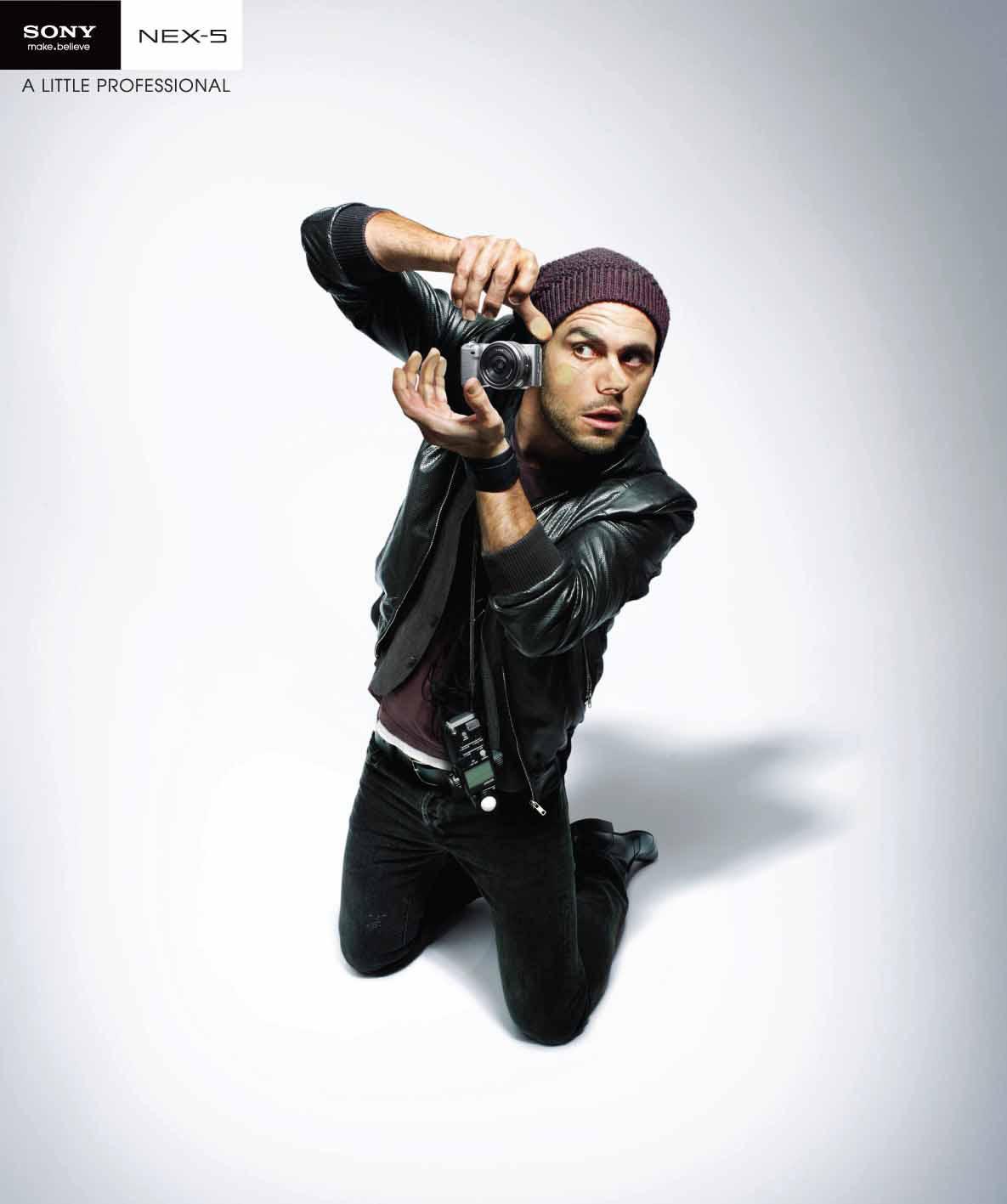Introduction
In marketing, pictures are frequently used to attract the target audience’s attention. It is essential to emphasize that specialists generally choose images with a secret subtext and can inspire customers to purchase them. At the same time, it is crucial to understand the influence that creative advertising pictures have on producing a need for the proposed product. Therefore, it is imperative to establish the fundamental aspects marketing professionals use in advertising images to affect customers; the paper will explore the advertising’s target audience, the context, purpose, tone, locale, and color spectrum.

Audience
The image of a professional photographer and a miniature camera is essential to grabbing the attention of ordinary people to the picture. This is because ordinary persons such as teachers, doctors, students, or others will understand that the camera has professional characteristics. It is significant to emphasize that the male holds the camera and is portrayed in the pose photographers use to create a successful shot. This picture indicates that a small camera can be valuable even for photographers, reporters, and sports journalists (Bommert, 2010). All of them are critical to the equipment used, which is why if one chooses a small, unassuming camera, it should be of high quality.
This photo inspires individuals who only use the camera for their own needs, such as to take pictures of children for a birthday party, to the fact that the camera has valuable specifications (Bommert, 2010). People who are not associated with creative professions will want to purchase this particular camera model in order to ensure that even their family photos are of high quality. At the same time, the compact size of the camera will allow people to take it with them on vacation and obtain professional photos. Thus, advertising is designed for ordinary persons who use the camera, not for professional purposes.
Context
The social context is demonstrated in the images of the product itself. Compact, small cameras are typical of the average person. Not many buyers will purchase a DSLR for the occasional photo of family holidays, trips, or vacations. From another perspective, positioning the product as a professional camera will encourage the consumer to consider it an object of buying. Moreover, it would seem inappropriate for the viewer to have such a technique for professionals. However, the photographers’ hands and the inscription “A LITTLE PROFESSIONAL” suggest an enormous potential for the miniature camera (Bommert, 2010). Thus, ordinary people can take high-quality photos using this camera. Accordingly, they do not have to purchase expensive equipment that professional photographers apply in order to achieve this effect (Bommert, 2010). Such advertising means that this device is suitable for everyone.
Purpose
This image aims to encourage ordinary individuals to purchase a Sony NEX-5 camera. The first eye-catching feature is the strange way the people in the picture “hold” the camera. Their hands are positioned as if they were holding a full-size DSLR with an impressive lens. Although, in fact, the images represent a small digital device (Bommert, 2010). Such a representation allows one to insinuate that the capabilities of such a camera are comparable to the abilities of a DSLR.
Tone
The compositional center of these pictures is centered on the camera. The man’s hands appear to frame it, indicating the central object of the picture, and the horizontal angle is oblique. When it was announced, along with the NEX-3, it was Sony’s first mirrorless camera (Bommert, 2010). It may seem that the principal subject is presented as insignificant. While this is intentional for the tone of the picture, there is an emphasis on the compactness of the camera; it shows the smallness of its size.
Location and Scale
The understanding of this photo can be interpreted in different ways. First, some object or event happened in the past, which is behind the picture that caught the photographer’s attention and captured it. Then the eye drops to the camera, and only after that follows the photographer. In this way, the person viewing this advertisement first evaluates the camera and then identifies it as professional through the photographer’s personality. Another order of understanding indicates that the human being in the image is considered first by the audience (Bommert, 2010). This construction of the picture enables the viewer to focus more on the figure of the photographer and find the characteristic elements of the photographer. Therefore, a person will desire to view the instrument for their work. The logo is located in the upper left corner, which is not typical for advertising photography (Bommert, 2010).
Font Type and Colors
The promotional picture has a non-bright colored background and discreet text, which immediately brings the focus to a small camera. Black and white color represents the brand of equipment, and the critical characteristic of the camera is written in capital letters (Bommert, 2010). Hence, a moderate palette and only the most essential inscriptions on the photo allow one to concentrate on the functionality of the small camera.
Conclusion
Thus, marketing experts applied the image of a surprised professional photographer using an ordinary camera. This is a successful strategy because most people who are not knowledgeable in photography immediately attribute the compact camera with professional features, which encourages them to buy it. In addition, putting the device inside the picture and framing it with the photographer’s hands further emphasizes the significance of the camera. Accordingly, the advertising is aimed at ordinary persons to motivate them to purchase a compact but professional device.
Reference
Bommert, A. (2010). A little professional, fashion [Photograph]. Ads of the World. Web.